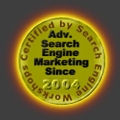 Look how old this is!
Look how old this is! I post at SearchCommander.com now, and this post was published 18 years 11 months 9 days ago. This industry changes FAST, so blindly following the advice here *may not* be a good idea! If you're at all unsure, feel free to hit me up on Twitter and ask.
Google was the first to announce broad support for XML sitemaps, and that has made it easier to submit your site to Google. Their webmaster tools may then be used to identify problems on your site as well.
At Pubcon this past week, it was announced during the “Search Engine Smackdown” that XML Sitemaps have been standardized, and that Yahoo, MSN and Google were all on board with a big group hug. Ask.com’s Peter Tinsley said they would be supporting it too very soon.
This is a noteworthy improvement in the way search engines will interact with webmasters, and I give the credit to Google for bringing about this improvement
What is an XML sitemap?
Sitemaps are how webmasters should inform search engines about pages on their websites that are available. This helps search engines to more intelligently crawl your site, and they will discover what you want them to.
Besides listing URLs, XML sitemaps include other data about each URL:
- When was the last update
- How frequently the page changes
- How important each page is, relative to other pages in the site
Using an XML Sitemap does not guarantee that your pages will be included in search engines, but it’s a good start. Read more about it at Sitemaps.org
What do I use?
I often get asked what Sitemap software I use, and I’ve hopped aroung a bit. While there are others with more features, I really enjoy the simplicity of Site Map Builder.net for creation of my XML sitemaps. It’s fast, easy, and it works well.
Don’t confuse an XML Sitemap with a static sitemap, which I still recommend using on every website. A static site is a page that lists all the pages on your website in a user friendly way. To this day, the best static sitemap software I’ve found is an online service.
It automatically crawls your site, using your meta data (title and description) to create the listings. It generates the .html code, then you just copy and paste it into your own design. It’s free, and available here



















